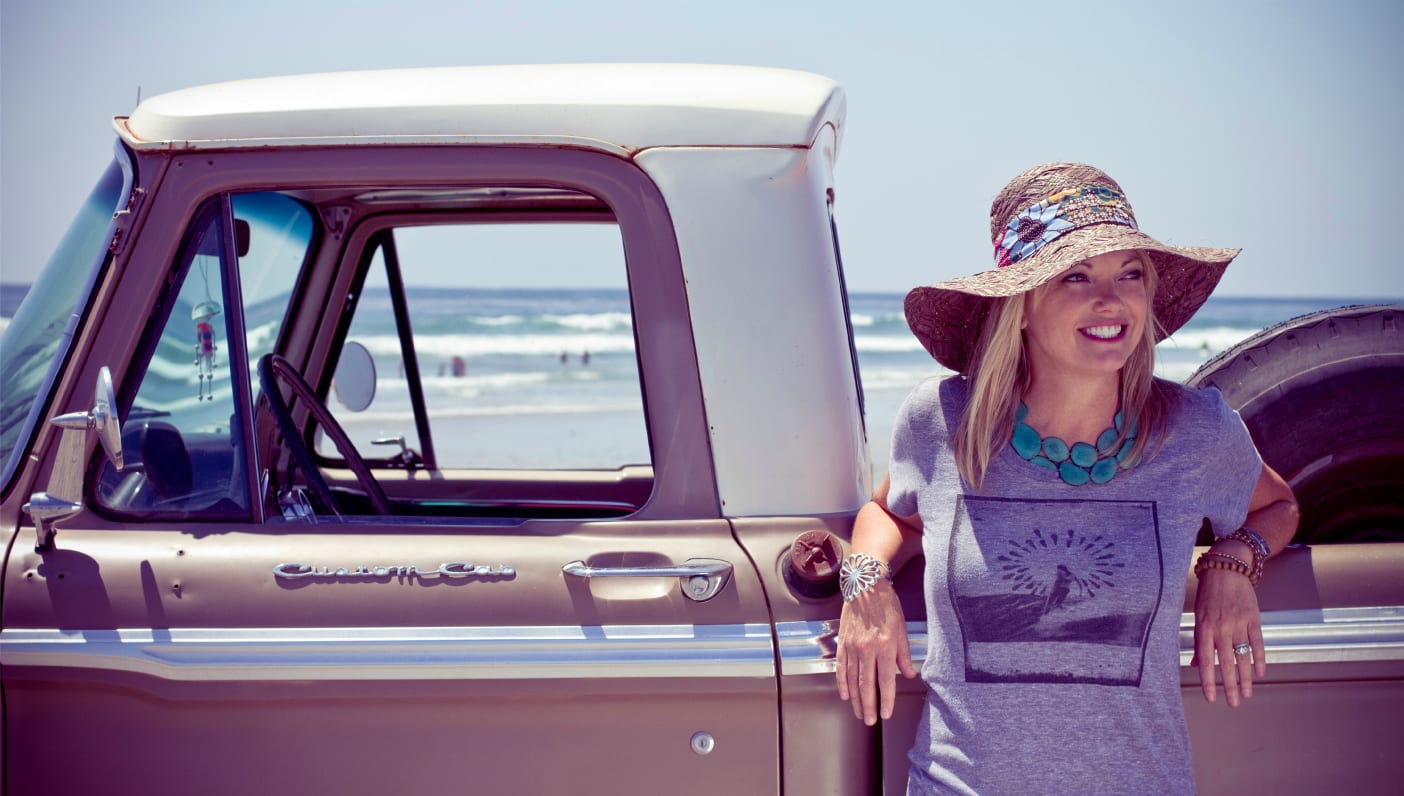
Why would you ever make collage art your medium of choice? According to Susan Wickstrand, a.k.a. the “Queen of Collage,” the answer has everything to do with “the entire world.”
Through collage, Wickstrand can create something deeply personal to channel her passions for travel, world cultures, surfing, and nature. By fashioning artwork from intimate objects and outward journeys, an individual story can merge with a theme or thought to share with the entire universe. “What we have in our surroundings, how we live and how we work are important to our psyche and well-being,” she says. “Collage is taking those things that you have around you and putting it into art.”
Best of all, collage is art for the people; it’s a visual expression that anyone can create with their own aesthetic. Here’s how to get started making your own.

Project: A Collage of Intention
“It’s Not a Vision Board”
Susan suggests creating a collage that contains a mantra or intention. It could be a theme such as self-love, courage, or expansion (for example, if this is the year you want to take a yoga teacher training or try a volunteer vacation). But remember, collage is a very different than creating a vision board. “It’s like the difference between writing a novel and poem,” says Wickstrand. “With collage we’re creating key elements, and there is a lot of editing. It’s getting down to the core: Being succinct and filtering down to the key images.”
All supply items can be purchased from a local art or craft supply store. Here’s what you’ll need to get started:
- A piece of wood or gesso board for your foundation
- Glue stick for mounting your found objects
- Mod Podge, for an acrylic sheen to coat your final product
- Watercolor paints and textile samples (optional)

Collecting Your Items
“I think a good life doesn’t happen by accident. It takes a lot of planning, and so does a collage.”
The most important part of your collage will be the objects you collect to include. Wickstrand encourages you to take your time with this process. A great place to start is with anything paper-based: Photographs from your phone, postcards, and mementos from favorite places. You can also add textile swatches (an old flannel scrap, for instance, or something from a craft store).
Whatever the object, take it to heart to create something meaningful for you. “The more different avenues that [objects are] coming from, the more interesting,” says Wickstrand. “It’s not something to be Photoshopped. This is a low-technology project. It’s about having fun, and playing.”

The Creation
“All things are created twice: You create in your mind and how you manifest, good or bad.”
A collage artist’s assembly of objects needs to be just as intentional as the selection. “First takes notes, think about what you want to create,” Wickstrand says. “Play with the images; editing them down, laying them out, and layering as desired. I will ask students questions about images: What is the strongest? It’s about being really mindful about placement.” One strong image is more powerful than several.
The assembly process is also the time when Susan lets go and allows intuition to take over, trusting what works well aesthetically and allowing the joy of play and creation to come through.
After you glue and affix your items to your base (using wood or the gesso board), you can also paint or write on top using ink or watercolors. Once dried, apply Mod Podge for an acrylic sheen. Dilute the mixture with water and brush it over the collage.

“I always believe that thoughts are things. They are seeds to action. It’s a preview of coming attractions,” says Wickstrand.
Written for Sanuk by Julie Balter
All photos by Kevin Roche, courtesy of Susan Wickstrand
In partnership with Sanuk
Taking its namesake from the Thai word for “Fun”, Sanuk makes creatively inspired and distinctively designed footwear for all walks of life. Sanuk is best known for its signature style the Sidewalk Surfers®, with patented tab construction, and inventive foot beds, such as its famed Yoga Mat and Beer Cozy sandals for men and women. In fact, since its inception, the Yoga Mat Collection (made outa real yoga mats) continues to pave a path of fun-lightenment around the world. Just one step in these smile-inducing styles and you’ll discover there’s no place like Ommm. For more information, please visit www.sanuk.com.